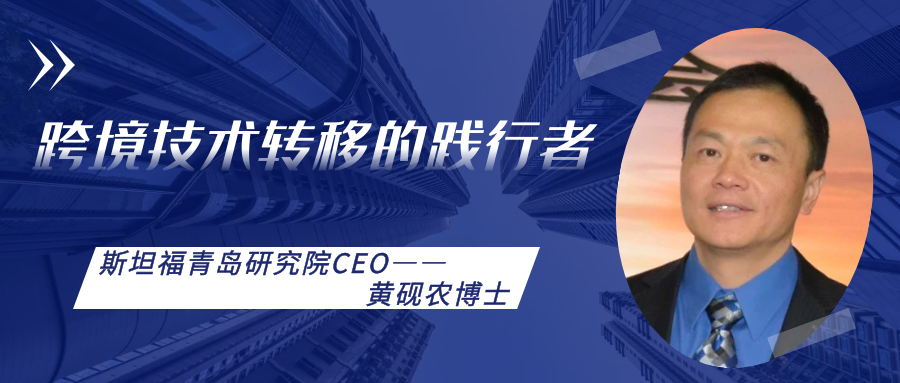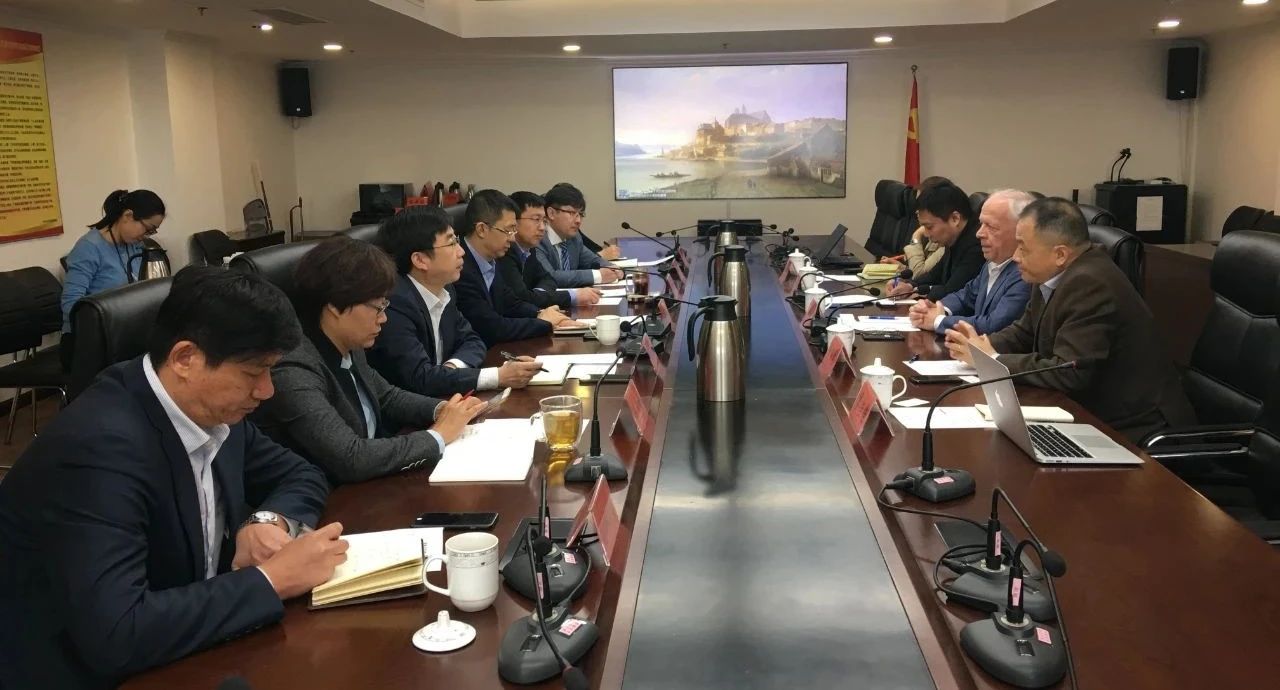Character reporter:
Huang Yannong, graduated from Huazhong University of Science and Technology in 1985. In 1986, she was sent to France to study with the first prize. In 1991, she received her doctor's degree from the National Institute of Posts and Telecommunications of France. He is currently the CEO of Stanford Qingdao Research Institute and an adjunct professor of Huazhong University of Science and Technology. It was selected as one hundred Talents Plan of Hubei Province, Wuhan 3551 Talent Plan and Xiangyang Longzhong Talent Plan. He has won the special support of Xiangyang High-tech Development Zone, the second prize of the first "Chunhui Cup" Innovation and Entrepreneurship Competition for Chinese Overseas Students, the technology Innovation Fund of Wuhan Small and medium-sized Science and technology Enterprises, the Special development fund of Wuhan software industry, and the development fund of Wuhan Science and technology Plan project.
Previously, He served as director of global Operations at Nextwave Wireless and as director of HP Research Labs, Chief engineer of Oracle, Senior manager of Augmentum, Vitria application Architect, professor of Computer Department of Moncton University, Canada, President of kloudSmart, Inc.
For more than 20 years, he has led the research and development of a number of core technologies such as Middleware, Service-Oriented System Architecture (SOA), Workflow, Enterprise Application Integration (EAI), Electronic Document Interchange (EDI), etc., successfully Implemented and deployed enterprise-level information systems for nearly 40 large customers in the United States and Asia; more than 50 papers were published in top international academic journals or conferences, and 5 software copyrights.

In the context of economic globalization, countries in the world are in close contact with each other, and the flow of various resource elements is accelerating. No country can independently grasp the direction of frontier high-tech development, nor can it achieve the optimization of scientific and technological resources within one country. Configuration. With the continuous improvement of my country’s economic structure, the work of attracting investment is constantly upgrading. From the early stage of attracting investment, the focus is on capital, and later, the focus is on talents. In recent years, there is a new term called cross-border technology transfer. The focus is shifting to technology, especially the technology that can fill the gap in the country or that is technically shortcoming. Therefore, international technology transfer has become a realistic requirement for high-tech development.
Dr. Huang Yannong, CEO of Stanford Qingdao Research Institute, based on his years of experience in cross-border technology transfer, said:
Cross-border technology transfer is a difficult and complicated task. Its complexity is firstly because it requires a professional background, so it is very professional. Second, it involves a lot of links, involving a wide range of aspects, involving technical, legal, market, and even cross-border trade levels. There are also many stakeholders, all of which make cross-border technology transfer paths. The process is complicated and the success rate is not high.
"Even though there are many difficulties, there are still rules to follow."
Dr. Huang believes that to achieve a successful cross-border technology transfer includes but not limited to the following four steps:
l The most important thing is to have a deep understanding, research and demand analysis of the domestic market.
l Second, the introduction of foreign technology from the content to the form of a precise positioning, considering the form of the introduction of entities, or technology authorization, etc. For example, in the software industry, Stanford Qingdao Research Institute will introduce the source code of the software or the license, the service life and geographical restrictions of the license, or introduce an idea, a method or a technical path. Therefore, cross-border technology transfer should have a precise positioning on the introduction of content to form, connotation to extension.
l Thirdly, the domestic carrier should be determined. It should not only have the technical strength to digest and absorb, but also have sufficient market capacity.
l Fourth, Stanford Qingdao Research Institute should build a complete ecosystem for cross-border technology transfer to ensure its sustainable operation, which includes the ecosystem formed by its capital, partners, all stakeholders, its resources, investment institutions, and even to help establish its business model.
Dr. Huang Yannong has successfully achieved a relatively complete cross-border technology transfer example through his efforts in recent years:
In the past few years, through the analysis of the domestic big data market, it was found that the current domestic technology could not meet the needs of a class of special application scenarios. One feature of this kind of specific application scenarios is that the application range is very wide, and the other is that the data volume is very large and the structure is complex. It is found that the current big data technology in this field is blank in China. Therefore, the Institute decided to introduce advanced foreign technology ideas, invite relevant overseas institutions to conduct system comparison tests to determine the technical route, and look for domestic companies as technology carriers to achieve the landing.
Supporting the horse for a journey, due to good market demand and advanced and relatively exclusive technical routes, the institute has assisted technology landing companies to achieve financing of more than 100 million yuan. This funding source mainly comes from the market, investment and financing institutions, and also part of the government. Support, in this way, ensure the effective and sustainable operation of the landed projects. The landed company became the first domestic company in the industry, helping to fill the gap in the country and forming a completely new industry.

Recently, a cross-border technology transfer example led by Dr. Huang Yannong has made breakthrough progress:
Through the comprehensive interconnection of people, machines, and things, the Industrial Internet improves the production efficiency of enterprises, resolves the risks of rising overall costs and outward transfer of industries, promotes the development of high-end industries, and promotes innovation and entrepreneurship, which has become an important strategy for national industrial development. The institute introduced the world's leading artificial intelligence supply chain management provider Adexa to fill the technical shortcomings in the construction of the industrial Internet, which is of great significance to boost the construction of the industrial Internet and promote the realization of digital and intelligent value chain supply chains in the core industries of the regional economy. Recently affected by international geopolitics, the importance of semiconductor chip manufacturing has become increasingly prominent.
The introduction of Adexa technology, which provides intelligent supply chain solutions for 80% of the customers of the top 25 semiconductor companies in the world, has important practical significance to ensure the international management level of the industry. The project has made breakthrough progress. In January 2021, it won the bid for the YMTC supply chain plan software procurement project (including software and implementation) of the Yangtze River Storage Company, the largest memory chip manufacturer in China.

Cross-border technology transfer is a core business of Stanford-Qingdao Research Institute, which is also one of the highlights that distinguishes it from other innovation platforms. Stanford Qingdao Research Institute has always carried out its work in accordance with its own principles, and will continue to optimize and strengthen the cross-border technology transfer capacity in the future work.
l First, systematize. On the source side of the project, the systematic establishment of project source channels is embodied in normalized, mutually beneficial and mutually beneficial cooperation with local industry organizations, investment institutions, and technology transfer institutions.
l Second, specialization. At the source of the project, at the technical level, at the market level, the quality of the project is screened and accurately benchmarked with the domestic market demand.
l Third, diversify. This mainly refers to the diversification of the region. Taking into account the instability of international politics and other factors, the source of the project is not only the United States, but also includes Europe, Japan, Israel, South Korea, etc.
l Finally, industrialization. Reflected on the landing end of the project, a complete industrial chain composed of industry leaders, financial institutions, and market resource entities will be built to ensure that imported technologies can smoothly and directly enter the domestic economic cycle system.